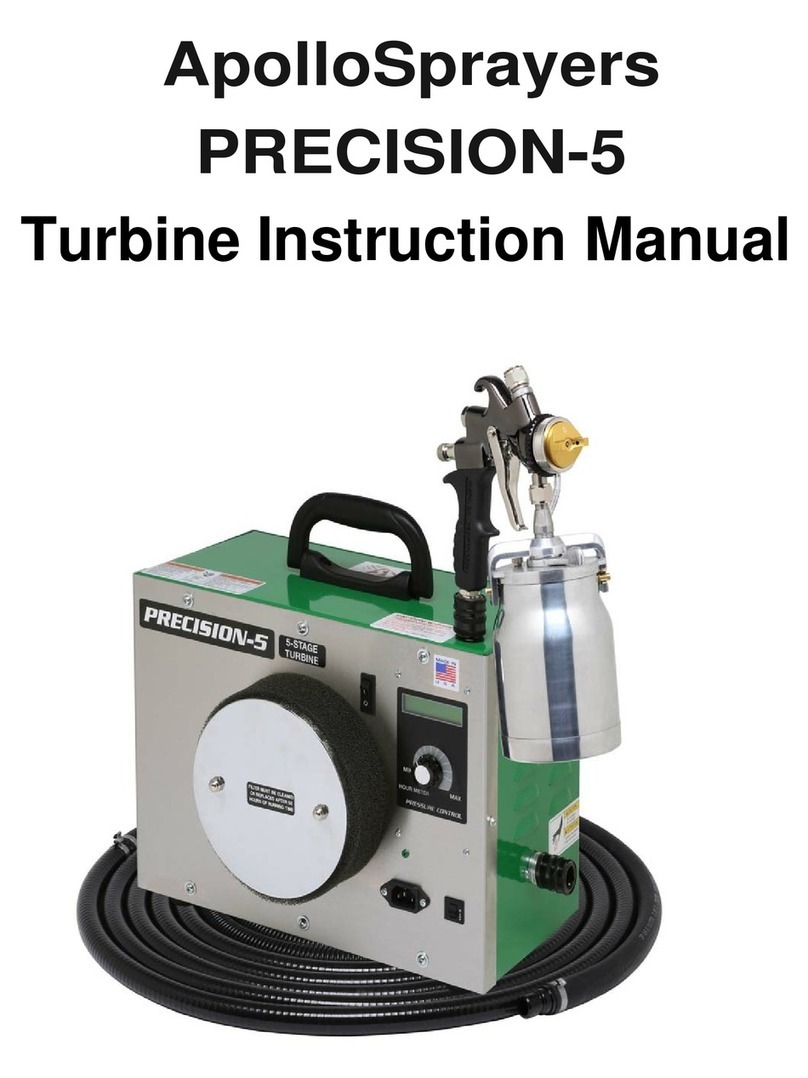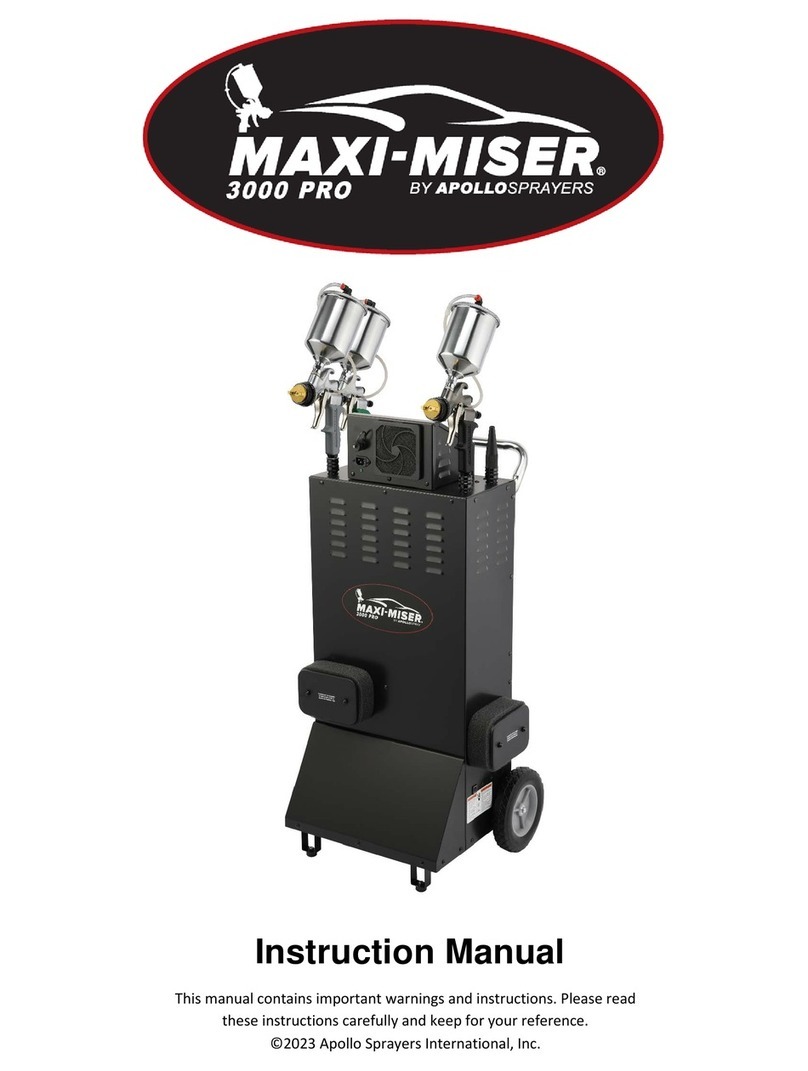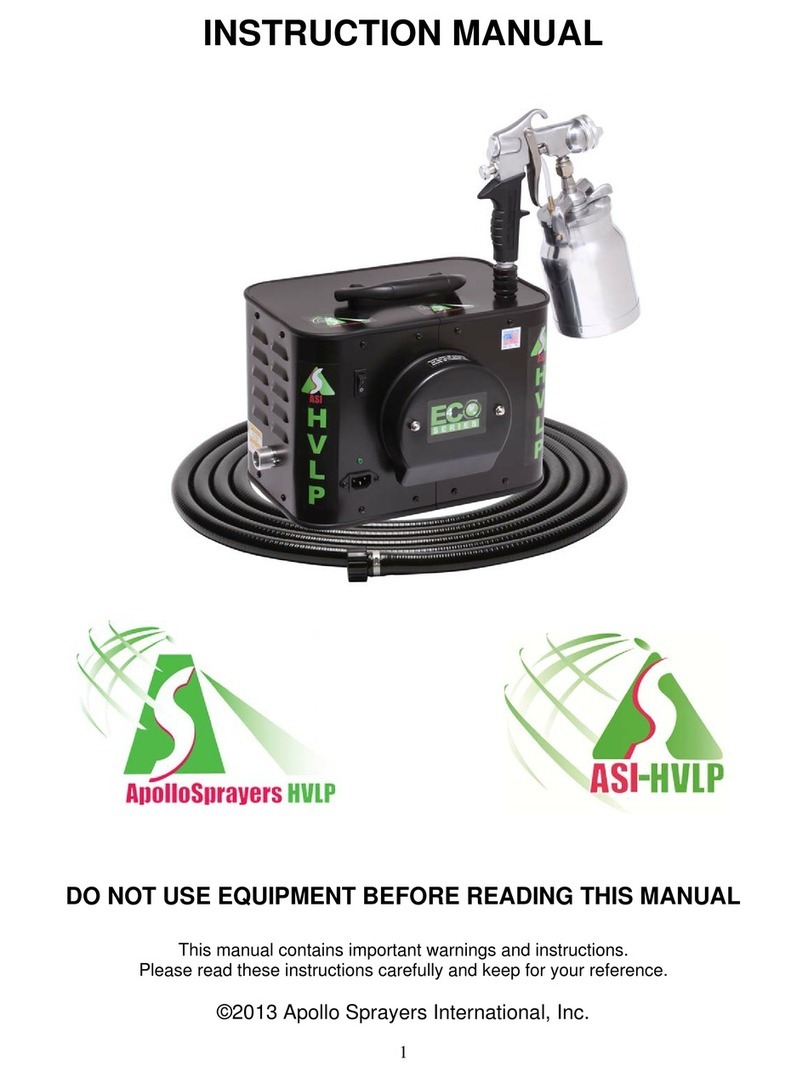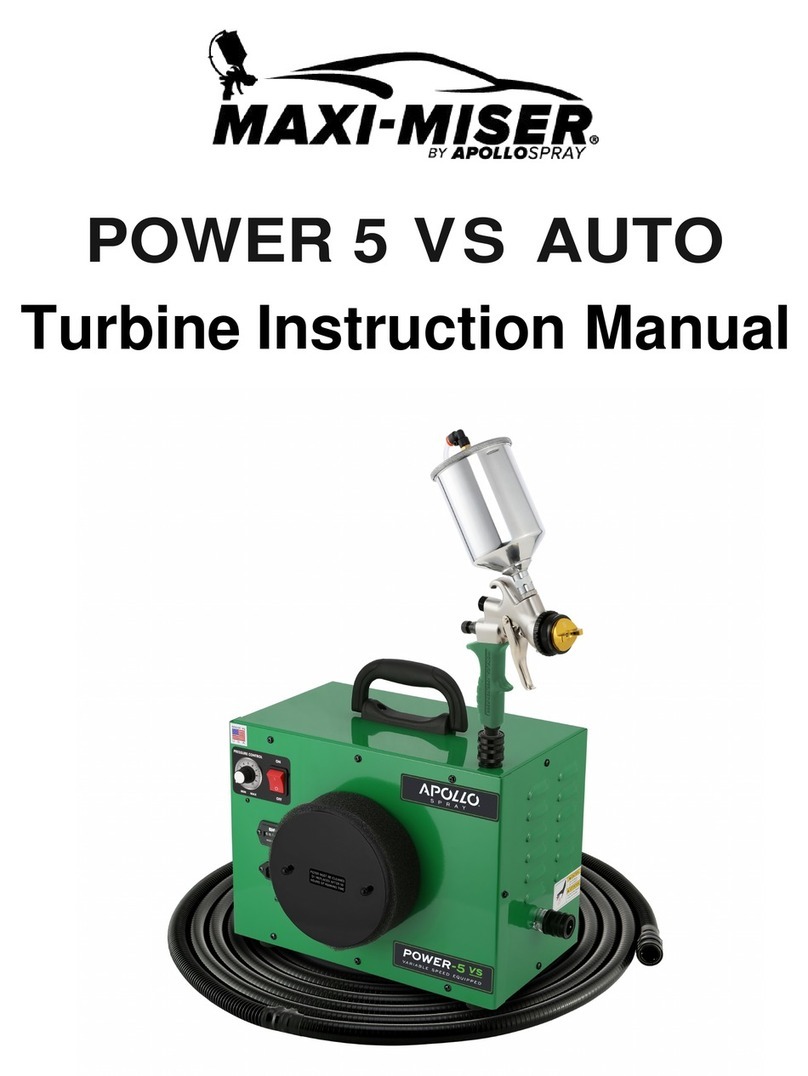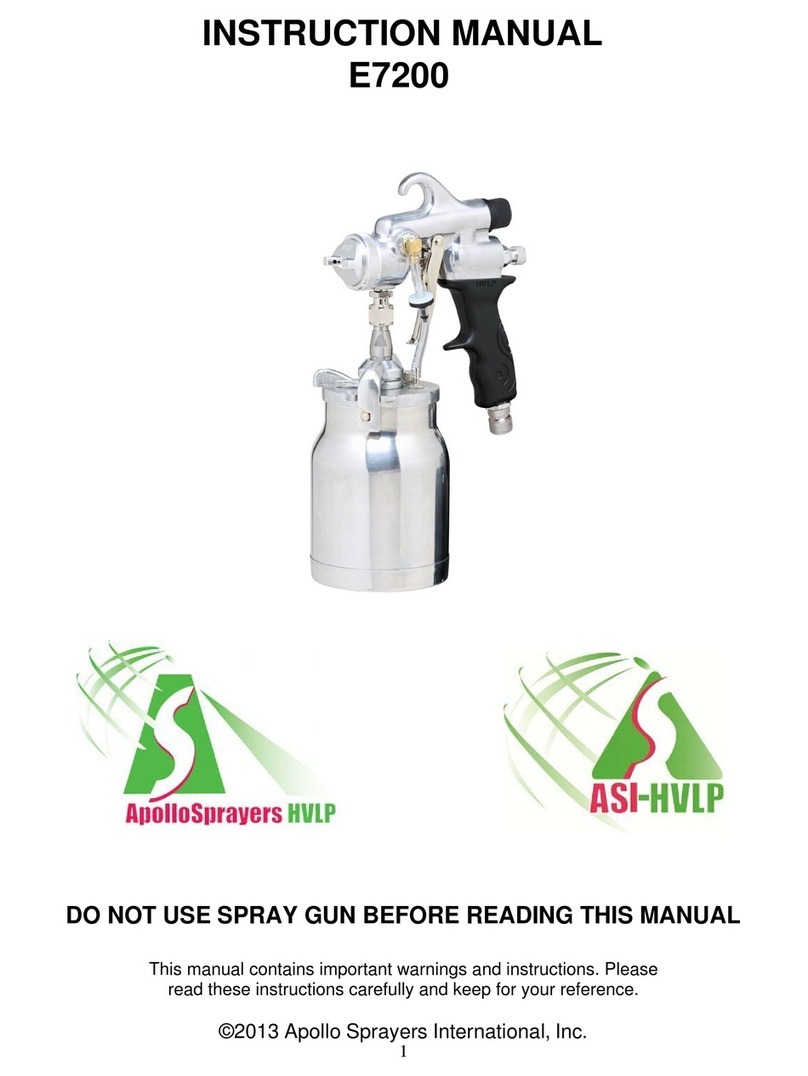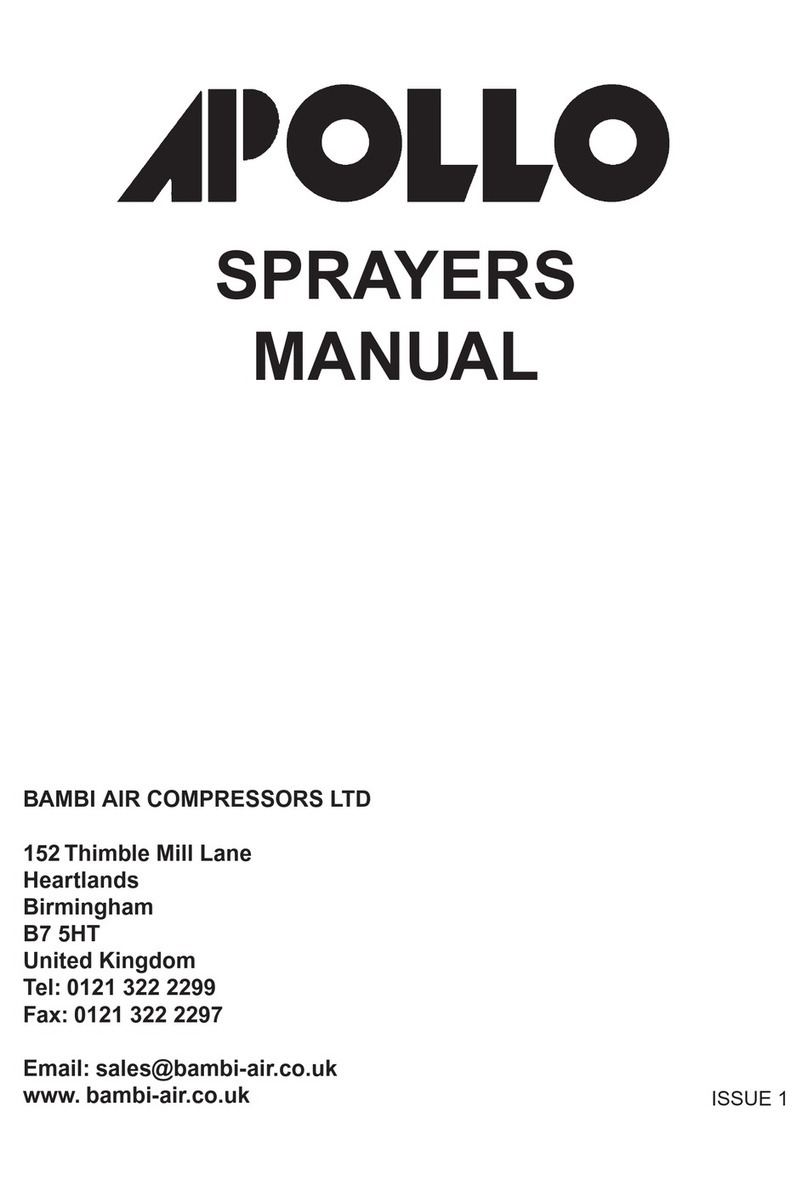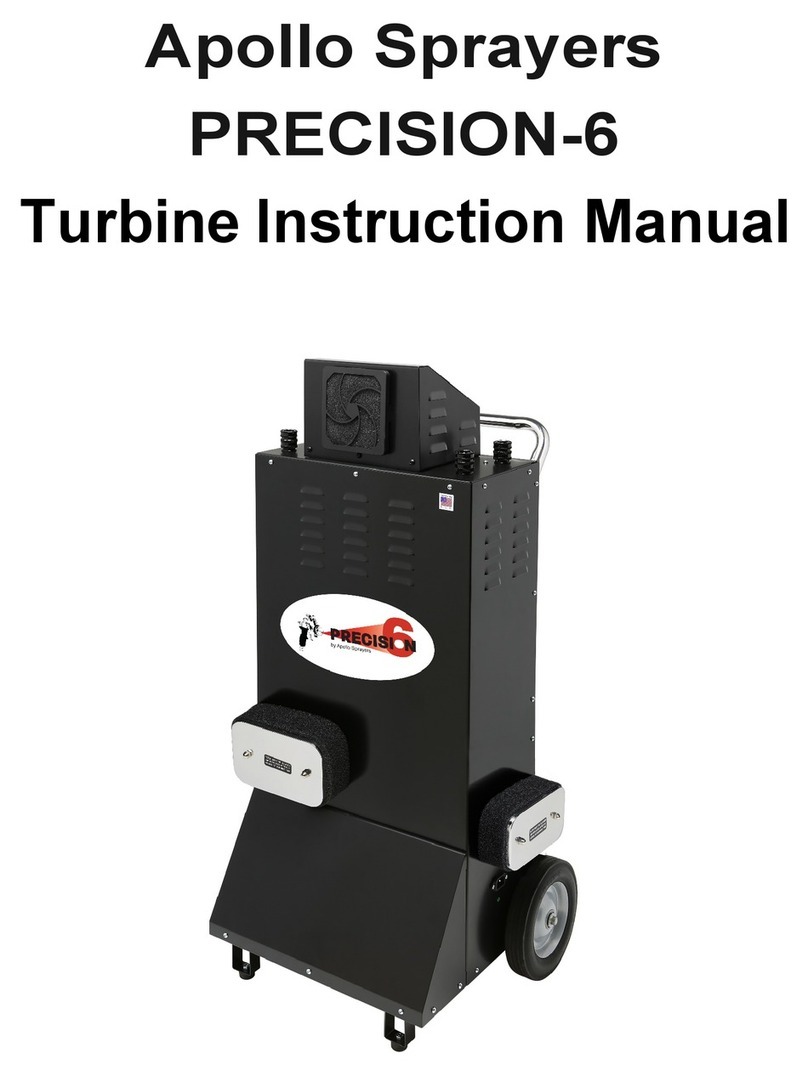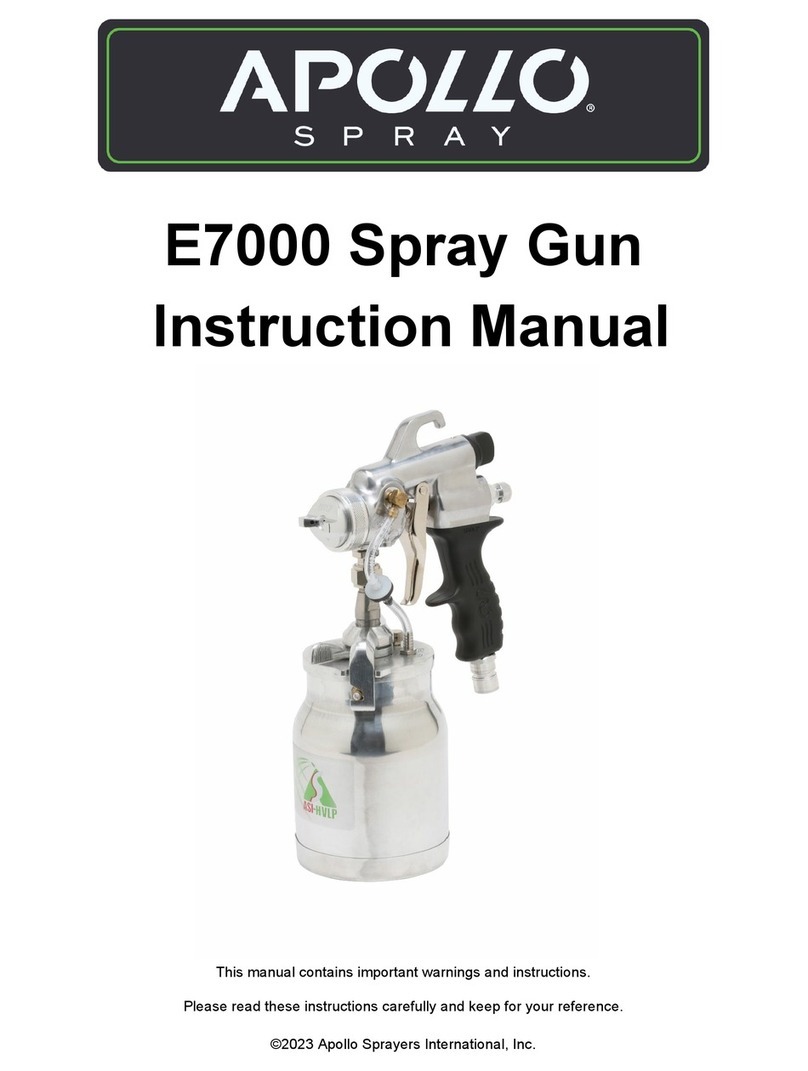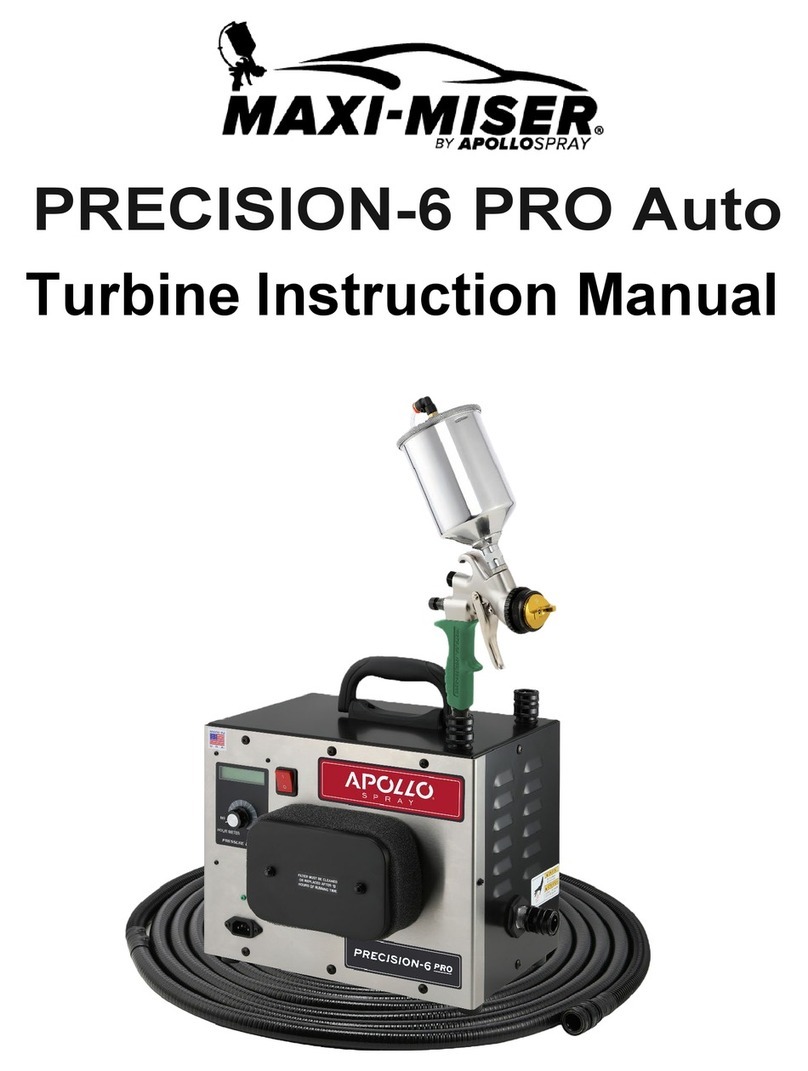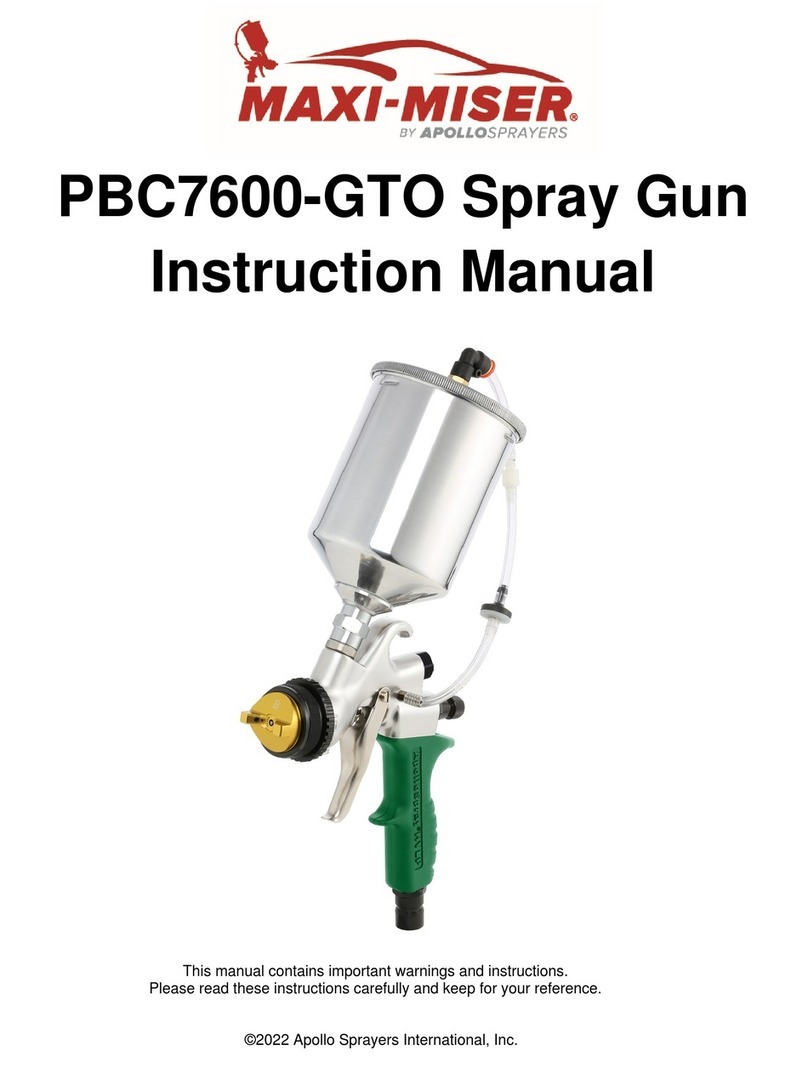
3 Apollo Turbine Model Precision-5 PRO LE
The model Precision-5 PRO LE is the newest Precision Series turbine system by Apollo
Sprayers International, Inc. Apollo’s Precision Air Control Technology (PACT) allows you to
control the air pressure from the turbine to within 1/10th of a PSI. Besides the ability to control
your air supply the PRO LE model also has built in filter warning, overheat control and a digital
hour meter. The Precision-5 PRO LE comes supplied with one spray gun and a 32’ air hose.
In order to operate the Precision-5 PRO LE you have to connect the air hose and spray
gun. The turbine will not operate correctly without back pressure to the motor, which
means the spray gun and air hose need to be connected. The Precision-5 PRO LE
is NOT compatible with “Bleeder” style spray guns. Pull back the ring on the female
quick connect located on the turbine and push the male end of the air hose into it, then
release the ring. Pull back the ring on the female quick connect on the hose and push
it onto the male connector at the bottom of the spray gun handle. Your system is now
connected. Put some paint in the cup and you’re ready to spray.
To control the air pressure on the Precision-5 PRO LE turbine, connect the spray
gun and air hose with the turbine. Plug the turbine into the appropriate voltage for
your model. It is a good idea to turn the pressure to the “Hour Meter” position to
start. Once you have rotated the dial to the “Hour Meter”, push the ON/OFF
switch to the ON position. The factory has calibrated your turbine motor for the
maximum spraying output pressure possible with the high power 5-stage motor. To
get an accurate stable spraying pressure it is advised that you let the turbine warm
up for about 5-10 minutes before spraying. Once the turbine motor is warm the
LCD will give you an accurate pressure reading to 1/10th PSI and hold it there until
you turn it off.
In order to get the most motor longevity out of your motor it is important to
understand the difference between static or sealed pressure vs. flow pressure.
When setting the turbine pressure for spraying you should always set the “flow”
pressure, this is the pressure when you are pulling the trigger on the spray gun.
You can set the flow pressure by connecting the spray gun and turning the system
on. Turn the material flow screw on the spray gun clockwise until it stops. This will
prevent you from accidentally releasing any material in the cup. You
only need
to
release the air pressure from the spray gun, not the material in order to set the flow pressure. This is why it is
preferable to set the pressure without any material in the cup. Pull the trigger and release the air from the spray gun.
While continuing to pull the trigger, adjust the pressure on the turbine to the spraying pressure of your choice. NEVER
just turn the pressure all the way to Max. This will make the motor try to give you maximum sealed pressure, which
will only create more heat and reduce the life of your motor. The MAX spraying pressure with the PRECISION-5 is
approximately 6.7 PSI depending on the motor, some are a little less. Therefore, when setting the MAX pressure
rotate the pressure control until the pressure does not increase any more with the trigger pulled, this is usually about
2-3 o’clock on the dial. Once you have set the pressure, release the trigger. The pressure will stay where you set
it.
Pull
the trigger again and watch the LCD screen. You will notice the air pressure drop and then go back to where you
set the pressure. This will work for any pressure setting. NEVER set the turbine at full power with the trigger not
pulled. This will not give you any additional spraying pressure and will only overwork and possibly overheat your
turbine motor when not being used.
The control board will automatically adjust the motor speed to compensate for barometric pressure and elevation. The pressure
reading will always be extremely accurate. To decrease the pressure from the maximum setting simply turn the knob underneath
the LCD pressure display counter-clockwise, toward “MIN”. To increase the pressure once reduced, turn the knob clockwise,
toward “MAX”. As you turn the knob, the pressure will increase or decrease accordingly. The scale behind the knob is there
only to indicate the direction to increase and decrease the pressure. The scale does not represent any settings for the air
pressure.
The viscosity of the coating you want to spray will determine the amount of pressure needed. The thicker your viscosity,
the more pressure you will need to atomize your coating. For highest efficiency, use the lowest pressure that produces
the best atomization and finish results. If you experience “Orange Peel”, increase the pressure. If you have too much
overspray, decrease the pressure.
Precision 5 PRO LE with
7700QT
High Power 5-Stage Turbine
110 - 120 volts, 60Hz
15 amps, 1.85 H.P
220 - 240 volts, 50Hz,
8 amps 1.75H.
Dual air filtration
Single spray gun
Weight: 31lbs (14.1kg)
Height: 12” (30.48cm)
Width: 8.5” (21.6cm)
Length: 15” (38.1cm)
All
EU
units
shipped
All 120 volt units are tested and certified
